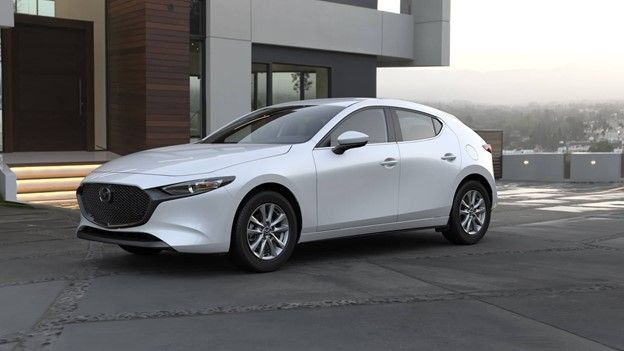I bought eight cars and one house between 2019 and 2022.
Call me a masochist, I guess.
I should probably mention the cars weren’t for me. I broker car deals as an occasional side gig, helping clients find the best make/model for their budget, tracking one down, and pre-negotiating a deal with the dealership.
And as the guy who did 90% of the work buying eight cars this year, lemme tell ya that it’s hard, but not impossible.
Yes, prices are up 35% on average; but you can still find a killer deal on a great car within budget without stepping inside the dreaded car dealership.
Without further ado, here’s how to buy a used car in 2024.
1. Make sure you really, really need a car
As mentioned, I’ve spent a lot of time and energy talking folks out of buying cars, even at the expense of my own commission.
That’s because unless you absolutely need a new vehicle, it’s usually better to wait if you can.
That being said, you might be wondering if it’s worth it to go ahead and pull the trigger.
Well, let’s take a step back and assess why you’re looking to buy a used car in 2024. Because you could be just as happy not buying a car yet and saving big money.
It might make sense to go ahead and buy a car if:
- You’re income-dependent on a car. If lack of transportation is affecting your ability to make money, that’s a good reason to go ahead and invest in a car.
- A car would provide massive quality of life improvements. If having immediate access to a car would make you feel healthier, less stressed, or simply give you way more time back in the day, it might be worth the current market surcharge to go ahead and buy one.
You should probably wait until the market cools off if:
- Your current car just “feels” old. Maybe your current car has some scratches, a check engine light, rides funny, and just generally feels old. Your gut might say “time for a new car,” but pump the brakes and consider this:
- You can make most old cars feel 90% new for under $1,500.
- It’s truly amazing what an oil change, tire rotation/balancing, new brakes and a wash/wax can do to a car. Not only will the car look, feel, and smell new, it’ll easily go for another 50,000, maybe 100,000 miles.
- So definitely consider a $1,500 midlife makeover of your current car before dropping $40,000 on a total replacement.
- You can get around fine on public transit. Even if you’re spending $100 a week on Lyft rides, that’s still less than half the cost of used car ownership during year one. Cars are expensive, man, and when you take the train you don’t have to worry about insurance, tires, gas, depreciation, and more.
Alrighty, so maybe you’ve decided you’d still like a car — or you’re reading this in the future when the market has already cooled off.
Awesome! I just wanted to make sure it was the right choice.
What’s next?
2. Set a conservative budget and stick to it
So, how much car can you afford?
I’ll give you the long version and the short version.
The long version can be found in our piece, How much car can I afford? It’ll help you tailor a budget to yourself, set a perfect loan term if you’re financing, and cover general tips for maximizing your budget.
The short version can be found in this chart, where I help you determine a max budget based on what kind of driver you are:
| Tier | Description | Max % of pre-tax annual income you should spend on a car |
|---|---|---|
| The Frugal Commuter | “I just need something reliable to get me to work. Nothing fancy.” | 15% |
| The Compromiser | “I’d like some creature comforts — maybe a good sound system and heated seats.” | 25% |
| The Enthusiast | “I love cars and driving, and want my whip to be as fun/luxurious as possible within budget.” | 35% |
So, if you make $60,000 a year and you’d like a fairly decent car, but not too fancy, 25% of your annual pre-tax income is $15,000. That’s a good upper budget to set.
Now, that may not sound like a lot in this market, but $15k can go a long way — especially once you learn that some models have appreciated less than others.
3. Target models and body styles that have had the lowest price increases
Yes, used car prices are still up 35% across the board compared to February 2021, and that stinks.
However, 35% is just an average — meaning some cars have gone up in price less than others.
According to a study of 1.9 million used car sales by iSeeCars.com, wagons, hatchbacks, and sedans remain the most affordable used car body styles. They may have gone up slightly higher than average in price (40% compared to 35%), but all three sell for well under $30k.
In terms of specific models, some Gen Z-friendly cars that have appreciated the least are the Mazda MX-5 Miata, the Chevy Camaro, and the Toyota Prius.
Now, if you were hoping to buy a crossover, and bummed to see that they’re one of the most over-inflated body types right now, I have an alternative for you to consider.
The hatchback body style is crazy popular in Europe for a reason; it offers the same cargo space as a crossover while being cheaper to buy, cheaper to insure, and way more fun to drive.

Oh, and speaking of driving fun, let’s cover the best part of the whole process!
4. Go on test drives
Would you pay $3,500 for a mattress without lying down on it first?
Probably not.
And yet, a study by DMEautomotive found that nearly half (49%) of car buyers test drive just a single car — or no car — before investing 10 times as much as a fancy new mattress costs.
Personally, I test drove 20 cars before buying mine. That might be excessive (and the employees at Nashville Carmax did look happy to see me leave), but five is a good number.
And to their credit, I think most folks don’t realize there’s a trick to testing five cars from five different manufacturers all at once.
Step one is to never go to the dealership to test drive a car. Most dealerships treat test drives like a 99% commitment to buy the car, calling/texting you incessantly and even “losing” the keys to the car you drove there in so you can’t leave. It’s reprehensible, scummy behavior, and you’d better believe I’ve called the police on several dealerships before to get my clients’ keys back.
Instead, go to Carmax.
Unlike Carvana or Vroom, Carmax still has physical locations where you can test drive several different cars back-to-back in a low-pressure sales environment. Either alone or with a client, I’ve tested 100+ cars at a dozen different Carmax locations and have never had a bad experience.
A few more tips for setting up test drives with Carmax:
- Carmax will ship cars from nearby locations for free, even for a test drive.
- If you can’t find the exact car you’re looking for, test drive a similar model/year from the same carmaker to get a general feel for the interior, tech, etc.
- On a similar note, don’t worry about colors; you’re not trying to find the exact car you want to buy, just the make and model so you can narrow your search.
- Remember to try out the various driving modes (Comfort, Sport, etc.) on your test drive, as well as play your favorite song over the audio system!
Once your test drives reveal your favorite make and model, you don’t have to buy the car you test drove. Simply take Carmax’s offer with you, and the game continues.
5. Turn dealership sales tactics against them
Between research and test drives, you’ll eventually narrow your search to a specific make, model, generation, color, and list of options (with perhaps some variances).
Now, if you’re (justifiably) dreading the day you have to walk into a dealership and negotiate with some sweaty salesman, don’t worry! I have a much better strategy that’ll save you time, stress, and money.
Let’s say you’ve been browsing Autotrader, Edmunds, and other sites and have found that three local dealers have the car you want.
Call up the dealer with the lowest price first and simply say:
“I’m calling about your gray, 2019 Toyota Tacoma, VIN 123, and would like to know: what is your lowest possible out-the-door price on this truck, inclusive of all fees and market adjustments?”
Then, take the price you get and call dealer no. 2:
“I’m calling about your silver 2019 Toyota Tacoma, VIN 456. Hennessey Toyota offered me an out-the-door of $39,833 on a similar model in their inventory (happy to send you a link). Can you beat that price?”
Then, take the lowest of the two offers and call dealer no. 3.
Rinse, repeat. The dealer who wants your business the most will earn it. And if any of them try to mess with you or raise the price, well, they know you have a better offer waiting.
With this tactic you can get the best possible price in town without walking into a single dealership. Then, once you get the rock bottom price, just jet on over (quickly) and make the final purchase.
I say quickly because dealers will often tell you their offer price is temporary, or that they’re going to offer it to the next person who asks, so you’d better get your butt over there. In my experience they’re not bluffing, so zip in and finalize your sweet deal.
One final tip: there are still dealers out there who refuse to sell new vehicles above MSRP (manufacturer’s suggested retail price) on moral grounds, and their used car prices often reflect that generous policy (shoutout to Sheehy Toyota near DC). So it might be worth a quick Google search for:
- “Dealer selling at MSRP in [your region]”.
- “Reddit dealers selling at MSRP in [your region]”.
Now, dealers have low inventory and high upkeep these days, and may play hardball when it comes to negotiating. You may find that every 2019 Toyota Tacoma in your area is way overpriced, which is why your final step is to:
6. Be patient and stay vigilant — a deal will come
Good deals on used cars still exist, but they certainly crop up less frequently these days. That’s why the lead time to get a great deal on a used car in 2024 is measured in weeks and months, not days like it was in 2019.
To cast a wide net, set alerts on multiple car shopping sites (Autotrader, Edmunds, Carmax, Carvana, Vroom, etc.) and ask the dealers to *email* you if they find a good deal (in my experience, dealerships can blow up your phone for months chasing a sale).
And remember; the longer you wait, the more prices are projected to fall. Even if a deal doesn’t manifest itself this week, time is on your side.
The bottom line
Buying a used car in 2024 is challenging but not impossible. Deals are still out there, and if you:
- Set a budget,
- Find a model/body style that’s still affordable,
- Go on test drives to finalize your choice,
- Turn dealership sales tactics against them, and
- Stay vigilant and cast a wide net, a killer deal will come along.
And if you’d like to save even more on car ownership, check out our guides to purchasing the exact right amount of car insurance and which providers to buy it from.


